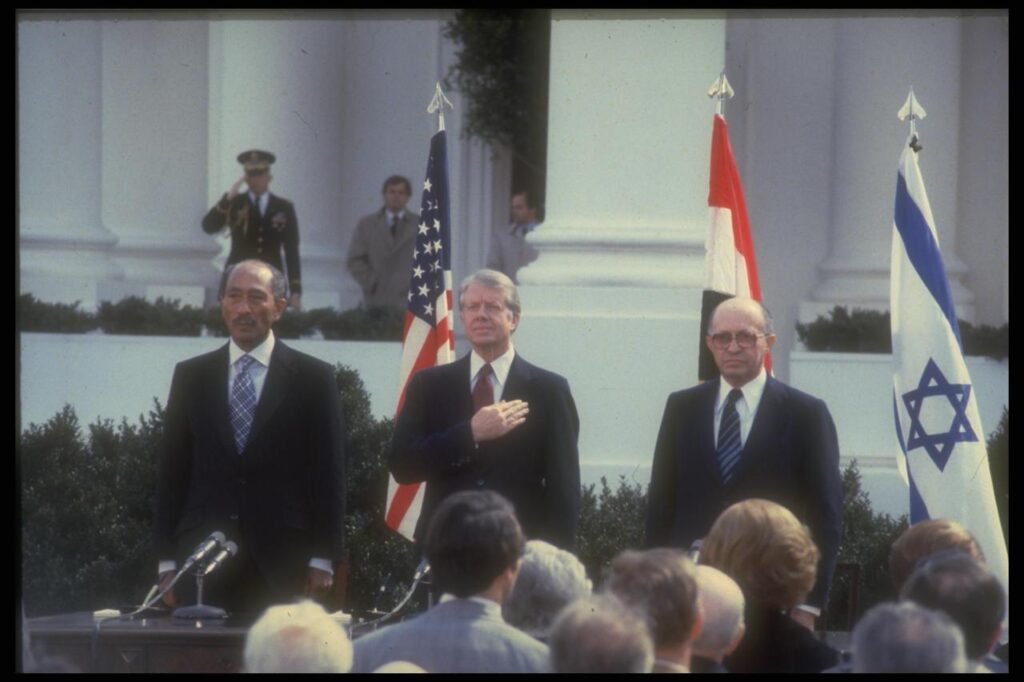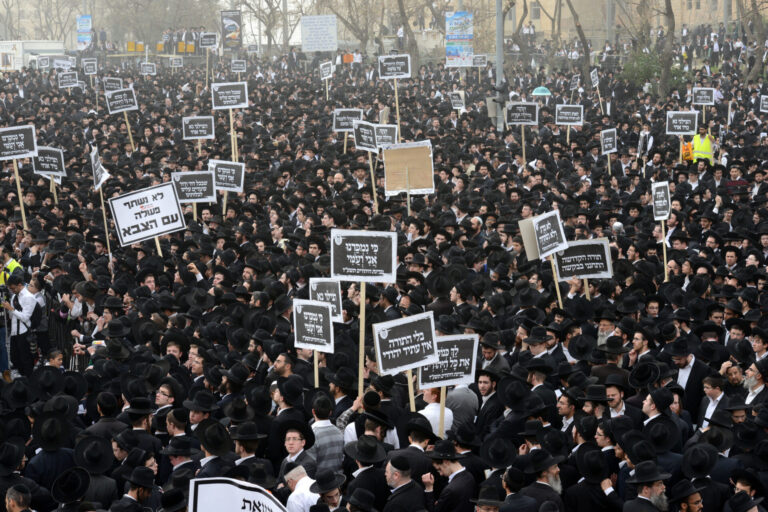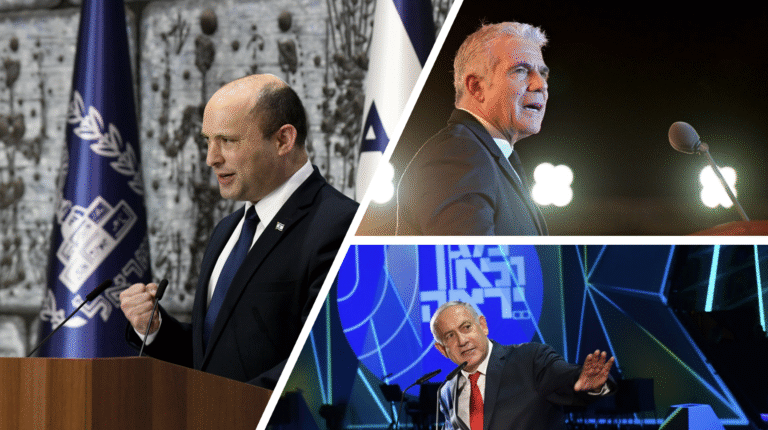The below essay was originally published in Sapir Journal on May 13, 2025. You can read it here.
In March 1978, a group of 40 Israeli high school seniors, on the verge of military enlistment, addressed a letter to Prime Minister Menachem Begin, who at the time was locked in difficult peace negotiations with Egyptian President Sadat regarding the price Israel would have to pay for a peace agreement. The students urged him to expedite the negotiations and called for a complete withdrawal from all territories captured from Egypt in the Six-Day War. They warned that if Begin failed, “the blood of the fallen will be on your hands.”
Sadat closely followed events in Israel and was aware of the public sentiment that supported his demand for total withdrawal. While his earlier visit to Jerusalem had effectively concluded the state of war between the two nations, the letter, backed by unprecedented media spin and support, granted him great leverage in the negotiations, allowing him to raise the price for the peace he had already agreed to deliver.
Begin had pledged at the start of the Camp David Summit that, if faced with such a demand, he would pack his bags and leave. Instead, he folded. For the first time in Israel’s history, he agreed to demolish thriving Jewish settlements and withdraw from all of Sinai down to the last centimeter.
The complete withdrawal from Sinai set a dangerous precedent in peace negotiations that remains durable to this day: Enemies can go to war against Israel knowing that regardless of the outcome, they will not forfeit even a centimeter of territory. This endpoint of negotiations with Sadat became the starting point for negotiations with the Syrian Assad dynasty, with Hezbollah terrorists in Lebanon, and with the Palestine Liberation Organization in Judea and Samaria: a frigid peace in return for a total withdrawal.
The letter led to the emergence of one of the most influential movements in Israel’s history: Peace Now. At the same time, a right-wing movement known as Gush Emunim emerged. The two movements shared undeniable similarities: Both were energized by youthful enthusiasm, both were born from esteemed institutions — the leftist one from film schools, the rightist one from Mercaz Harav yeshiva in Jerusalem. One called for withdrawal from all territories, the other advocated settlement wherever possible. Both were poor in resources but rich in media coverage. From their modest offices, one in Tel Aviv and the other in Jerusalem, they both transformed the country.
***
It is no coincidence that these movements arose soon after the historic election upset of 1977, in which the revisionist Right defeated the socialist Left for the first time. Unwittingly, the two camps exchanged not only Knesset seats, but ideological perspectives as well. The settlers who spearheaded the Right essentially tried to succeed the socialist settlement movement. The early settlements, including the one where I was born, Ofra, exhibited an earthy romantic aesthetic and were very particular about maintaining a uniform appearance for all the houses. In the early years, they had admission committees, communal dining rooms, a gate that closed at night, and even collective salaries — very much like a kibbutz.
Meanwhile, Peace Now, like the revisionist Jabotinsky intellectuals of old, was a very urban movement, with wire-framed glasses and liberal professions, preferring press releases over dirt, concrete, and cement. Suddenly they had switched sides: The leftists were now the city dwellers with delicate hands, while the rightists donned khaki and sandals and wielded shovels.
The divide in style also reflected a fundamental difference between the two movements: Peace Now called for extensive, immediate action, in one fell swoop. Gush Emunim called for gradual settlement, to seize a hilltop and then a valley, five caravans here and a chicken coop there. It adopted the winning strategy of Israel’s historic Labor movement: one more dunam and one more goat, just as Peace Now was adopting the principle of international consensus, previously the preferred method of Israel’s historic rightist movement, Herut.
During the crucial years leading up to Israel’s independence, Ben-Gurion supported slow, bottom-up grassroots construction, while Jabotinsky advocated top-down international intervention for the establishment of a state. This was the debate between the practical Zionism of settling and planting and the political Zionism of agreements and treaties. Jabotinsky and Begin fought for years over the principle of the Jewish state’s final borders, here and now. Even 50 years after the Kingdom of Jordan had been established, Begin still called for “both banks of the Jordan,” meaning that Israel should span from the Mediterranean all the way to Iraq.
What began as a conflict between opposing political positions became equally a disagreement over method: the Left stressing the “urgent” and the Right stressing the “gradual.”
To put a finer point on it, the more important of the two words that make up the movement’s name is not peace, but now. In the ubiquitous logo designed by an Israel Prize laureate, peace is written in a biblical font while now is in modern typeface. Peace — shalom — is indeed a Hebrew word that appears in the Bible 237 times. And although the word now — akhshav — does not appear in the Bible, it is more than 2,000 years old. So is the tension within Judaism between the urgent and the gradual. The famous words of Hillel from Pirkei Avot serve as the rabbinic basis of the Left’s position: “If not now, when?” (Pirkei Avot 1:14).
This nowism claims to be a continuation of practical Zionism, whose message was — in contrast to that of most European religious Jewry — to take decisive action against all odds, instead of passively waiting and praying.
The success of Peace Now gave rise in subsequent decades to a series of Tel Aviv–based movements that, though they appeared quite different from one another, shared an absolutist commonality: They called for immediate action and demanded total results.
In the 1990s, left-wing organizations came out with the demand: “Let’s get out of the territories now.”
In 2006, immediately after the Second Lebanon War, Peace Now alumni launched an extensive campaign titled “Assad is waiting for Olmert,” a clear call for Israel’s prime minister to immediately accede to the Syrian dictator’s demands and withdraw from the Golan Heights all the way down to Lake Kinneret.
At the same time, a public movement arose for the return of abducted soldier Gilad Shalit from Gaza, calling, “We want him home, we want him now.”
The intentions behind all of these movements and calls to urgency have always been good; the results have always been devastating. Taking them in chronological order: The Oslo Accords, intended to pave the way for a Palestinian state, blew up after Israel’s prime minister offered almost everything to the Palestinian Authority leader. Instead of negotiating in good faith, Yasser Arafat launched an intifada in which more than a thousand Israelis were murdered.
With Syria, Israel narrowly escaped losing the Golan Heights only because of the recalcitrance of Hafez al-Assad, the butcher from Damascus. Otherwise, ISIS and global jihadists would have been wading in the Kinneret, poised to conquer the Western Galilee.
The decades-long campaign to leave the territories immediately and unilaterally culminated in Israel’s withdrawal from Gaza in 2005. Rather than save lives as intended, it ultimately extracted a horrifically bloody price. In addition to emboldening Israel’s enemies and leading to war the following year, the withdrawal allowed Hamas to quickly seize control of Gaza and establish the largest terror stronghold ever seen, with hundreds of kilometers of tunnels, tens of thousands of fighters, and hundreds of millions of shekels. On October 7, 2023, two commando divisions breached Israel’s borders, resulting in the worst massacre in the country’s history and the greatest loss of Jewish life since the Holocaust.
Gilad Shalit’s eventual return by Netanyahu’s government five years later came at an unprecedented cost of more than a thousand terrorists, including despicable murderers such as Yahya Sinwar — the man who would later orchestrate the October 7 massacre.
The most recent example of this absolutist nowism folly is, it pains me greatly to say, what Israel and its supporters are struggling through today. The legitimate and wrenching campaign to save the hostages is expressed variously in the phrases “Bring them home now,” “All of them now,” and the twin demand of “at any cost.”
The emotive and political intensity of this campaign has already, in keeping with the pattern, inflated the price for Israel and undermined its negotiating position. For the first time, Israel paid for the release of hostages not only with other prisoners but with strategic military currency, a cease-fire.
None of this is to cast doubt on the moral and deeply Jewish impulse toward urgent action. But it is important to remember that Judaism tempers this impulse with realism. In the words of Rabbi Tarfon, also in Pirkei Avot, “It is not up to you to complete the task, but neither are you free to desist from it” (Pirkei Avot 2:16).
This is the Jewish canon’s way of teaching the tension between the “now” and the “next.” The leaders of the leftist movements would do well to take Rabbi Tarfon as good counsel that, alongside the requirement to act now, not everything can happen now. It is Judaism’s way of demanding action cognizant of the illusion of control.
This combined approach was well-known to the fathers of Zionism but has been forgotten by leaders of movements that tried to succeed them.
Theodor Herzl raced around the old world with urgency, trying to secure a state for Jews, knowing almost for sure that he would not live to see it. At the conclusion of the First Zionist Congress in Basel on September 3, 1897, he wrote:
Were I to sum up the Basel Congress in a word — which I shall guard against pronouncing publicly — it would be this: At Basel I founded the Jewish State. If I said this out loud today, I would be greeted by universal laughter. In five years perhaps, and certainly in 50 years, everyone will perceive it.
Exactly 50 years later, the UN General Assembly decided on the establishment of the State of Israel. Herzl died seven years after he wrote these words and did not live to see the state he had envisioned.
The partition plan approved by the United Nations presented David Ben-Gurion, leader of pre-state Israel, with a similar dilemma. With trembling hands he signed the agreement that established impossible borders for the Jewish state, just a few kilometers wide, with Jerusalem under international sovereignty and the majority of the biblical Land of Israel in Arab hands. The word Jerusalem appears nowhere in Israel’s Declaration of Independence of 1948.
His rival Begin went wild:
There is a limit to security that can be achieved without Jerusalem. There is a limit to peace that can be achieved without Jerusalem. No nation in the world would relinquish the heart of its capital.
For years Begin accused Ben-Gurion in the Knesset — just one kilometer from the border — of knowingly relinquishing the capital.
***
Had Begin not been persona non grata in Ben-Gurion’s prime ministerial office, he would have seen on the desk of Israel’s first prime minister framed words from Exodus 23:30: “Little by little I will drive them out before you,” a knowing nod at Ben-Gurion’s future plans. In terms of results, it is clear now that he was right: Today’s Israel spans nearly twice as much territory as was designated for it, and united Jerusalem is its undivided capital. Like Herzl, Ben-Gurion knew that there is a balance to strike between what can be done now and what can be done by others in other times.
Neither Herzl nor Ben-Gurion — and certainly not leaders of the various “now” movements of recent decades — was familiar with the teachings of Rabbi Abraham Isaac Kook. The rabbi with the luminous eyes founded the yeshiva from which would later emerge Gush Emunim — the nemesis of Peace Now. He articulated in a single sentence both Herzl’s and Ben-Gurion’s urgent activism along with their long-term vision: “The eternal people does not fear a long road.”









